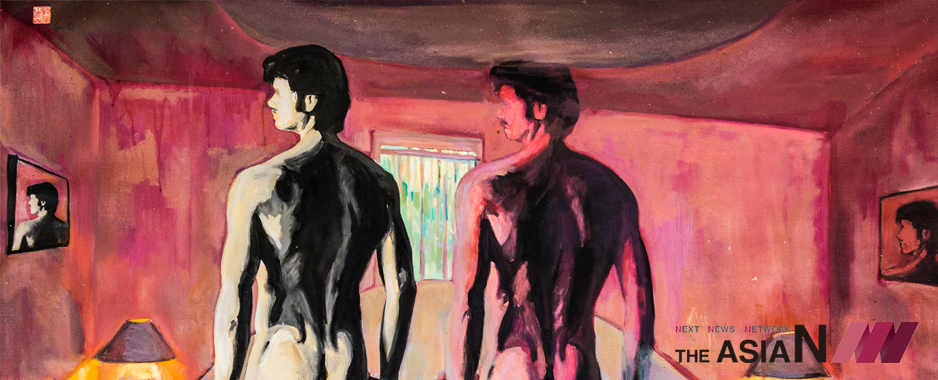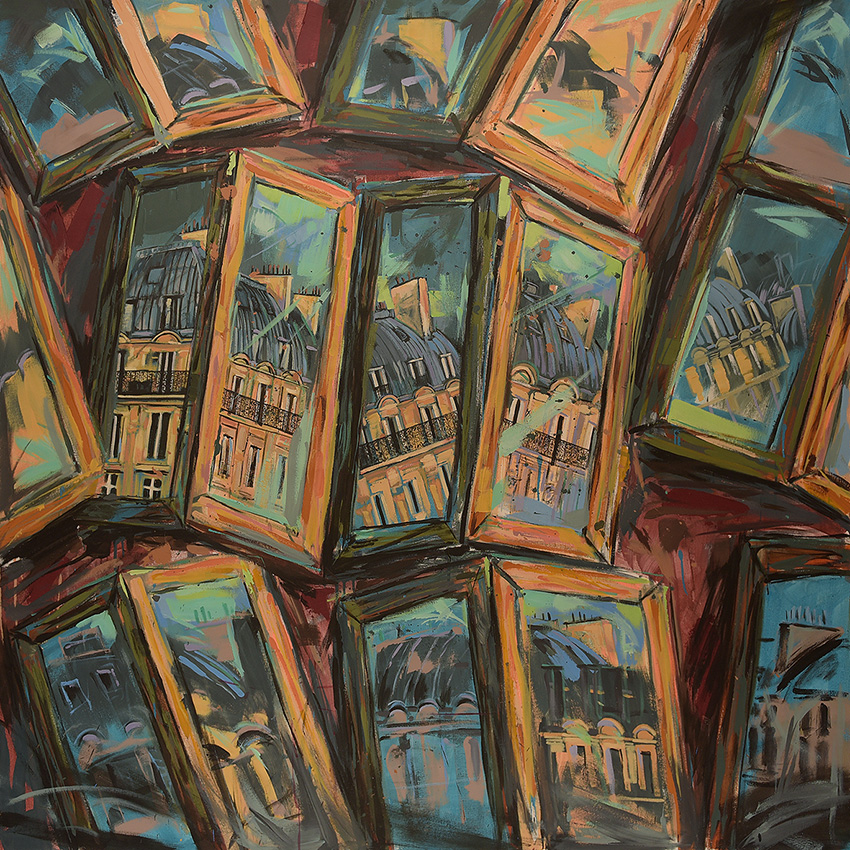
Looking and Painting through Windows
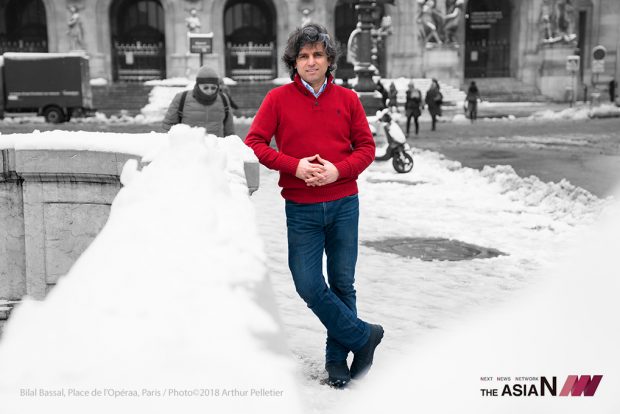
Born in Beirut, Lebanon, in 1973, Bilal Bassal is an artist currently living and working in Paris. After studying drawing and painting at Institute of Fine Arts in Lebanon, he settled down in France, where he studied The Art of Engraving and Printing at École supérieure des arts appliqués. In 2000, he held his first solo exhibition in Beirut. In 2002 he took part at the 12th Space International Print Biennial in Seoul. Since then, his artworks were exhibited in Lebanon, France, Kuwait, Spain, Germany and South Korea. Below, an interview with the artist himself reveals Bassal’s artistic intention and the concepts behind his paintings.
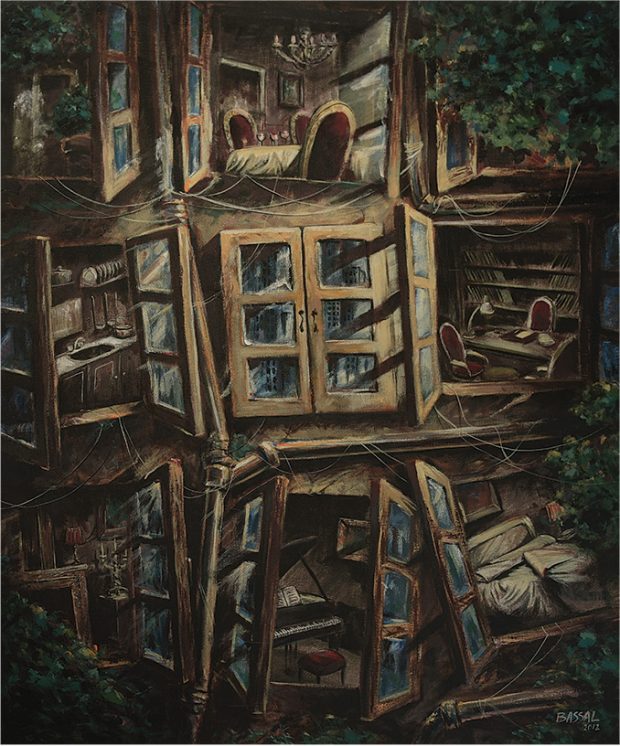
Acrylic on Canvas / 100 x 80 cm / Paris 2012 / Photographing artwork ©2016 Rami Chams
Why and how do you create your artwork? How do you begin, and what technique to do you use?
Why? Because, I liked to draw and paint since I was a child, I loved to challenge myself on the empty surfaces of paper, wood, canvas, and other materials. The most important part of my art was always the freedom to express my feelings to realize those concepts swirling around my head. Most of the time, I make rough sketches—on paper—draft sketches to understand what it is I want to create. As we are currently living in the age of technology, many of the artistic mediums we use have electronic alternatives, but I like to stick with the traditional option of using original art tools to draw. A draft sketch often helps me visualize my thoughts in a more tangible and realistic way, as I switch my mind from one subject to the next, later returning to analyze what I have drawn so far. Sometimes I will take the time to research more to complete the final piece.
After the sketching, I go on to preparation of the materials for the artwork. From time to time I will pay me trip to the Saint-Pierre Market here in Paris to buy various things I need, I realize this is all part of the artmaking process. When everything is ready, I sit in front of the blank canvas, ready to paint. This is my favorite moment; I think it’s similar to the feeling when an athlete is at the moment just before the game begins, there is an excitement before what is about to happen. It is finally time to realize what has been in my head for all this time. I play some music and have a brush in one hand and the color palette in the other. From that moment on, my body is in the workshop, but I can feel that my soul has flown away. Where to exactly? I couldn’t say…
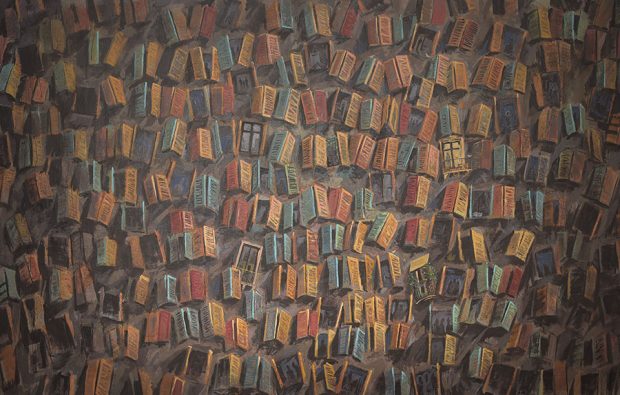
Acrylic on Canvas / 140 x 220 cm / Paris 2016 / Photographing artwork ©2016 Rami Chams
What concepts do you usually express in your work?
Most of the time, I seek to convey our world; the history, people and their mysterious exchange of emotions; the life that we live, coexisting with others and nature. I have always been fascinated by the subject of our humanity in general. At the same time, I like to explore the idea of mediator, anything that comes in between what is seen and what actually is. In my first solo exhibition (2000), the mediator that I examined was “The Human Mask”—how people use it to communicate with one another and disguise themselves under the safety of such a mask, not having to show our real faces. After that, that mediator was “The Bar Code, which was a concept that I painted about touching on how business and consumerism affects family structures and society at large. Next, the mediator was “The Misery” and now, “The Window,” both works showing the importance of love and peace.
On this line, I would say that “The Window” is the work I consider to be at the focal point of the concept of mediator. Through that small space that usually takes different shapes and sizes, we are able to visually access other people’s homes and the outside world that envelops us. The window thus becomes the channel of continual communication with people on both sides being able to look within and look outside. Windows could essentially lay bare the inside of all its details, dreams, complexities, and secrets but also allow for more openness and harmony. I have always thought it interesting how windows are metaphorically understood as objects that are open, while doors are considered closed.
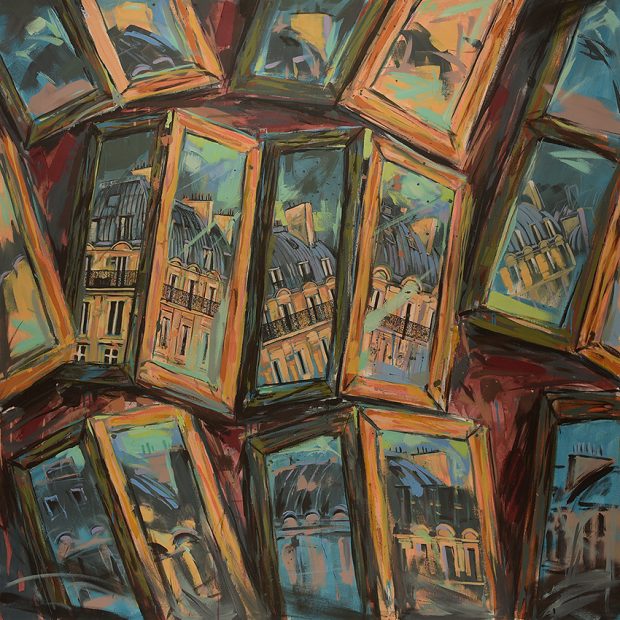
Acrylic on Canvas / 150 x 150 cm / Paris 2016 / Photographing artwork ©2016 Rami Chams
How and where do you usually find the inspiration for your artwork?
I am inspired the moment I open my eyes. I observe everything around me, really everything. That’s also why I think visual memory is so important in the life of an artist. But what matters most is the creative thought that pops in my mind at any moment, at any day. During my high school years, a talented young painter once told me a piece of advice that I have kept till this day: “A real artist is the one who can paint not only what he sees, but what he imagines too.”
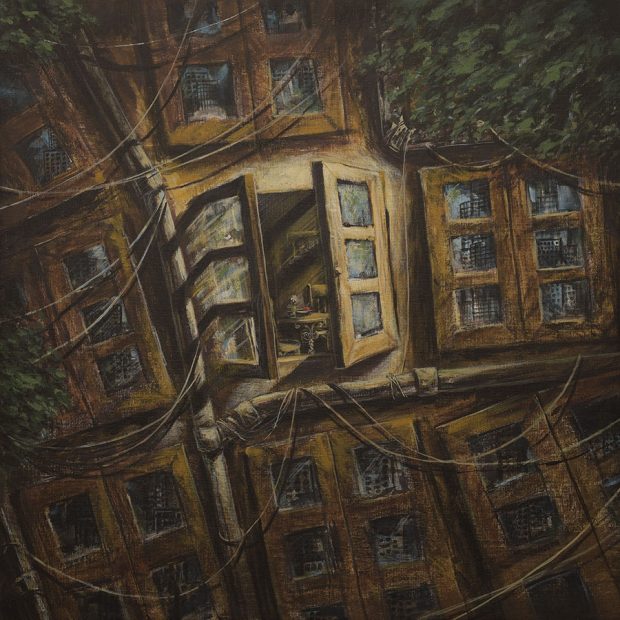
Acrylic on Canvas / 70 x 70 cm / Paris 2010 / Photographing artwork ©2016 Rami Chams
Can you tell me more about your past exhibitions, present and upcoming projects?
As I have mentioned before, people are the center of my interest because I believe that people are the ones mainly responsible for the way things are; the good and the bad. In the past, I participated and contributed to many collective exhibitions in Lebanon, sharing with others my interest with people and the human body.
In 2000, I opened my first solo exhibition called, “Masks and…” in Beirut, interested by the hidden faces of people. This particular exhibition included around 40 different paintings. In 2002, I was able to present my artwork in an art museum in Seoul after winning 12th Space International Print Biennial and the prize which was winning an opportunity with international publicity.
Since then, my artwork has been seen in exhibitions across Lebanon, in France, Tunisia, Spain, and Germany. In 2008, I began working on my series with “Parisian Windows” and then presented that two years ago, in 2018, through my solo exhibition in Gallery Boushahri (Kuwait). The Museum curators encouraged me to begin my second part to the series and I believe it will be presented in another exhibition to take place in the city of lights: Paris.
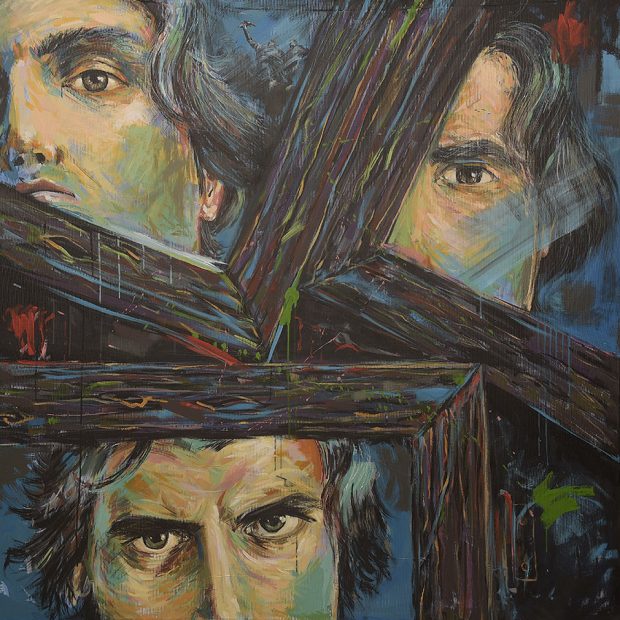
Acrylic on Canvas / 145 x 145 cm / Paris 2016 / Photographing artwork ©2016 Rami Chams
You also have a passion for creating illustrations for kids. What kind of content do you make for such audiences?
Yes, I’ve had this passion for a long time. A lot of my work is used to illustrate magical stories. When I was in my youth, I used to write many short stories that would go into magazines and other books. I think that many kids are good readers and some of my best critics. So when I create an illustration for a children’s book, I try to do my best, not only because children deserve that, but also because it’s so fun to create a magical world and bring kids into that fantastical environment, when that happens, it becomes easier to live our ordinary lives. Once in a while, we should go back to the imaginary world of magic and adventure.
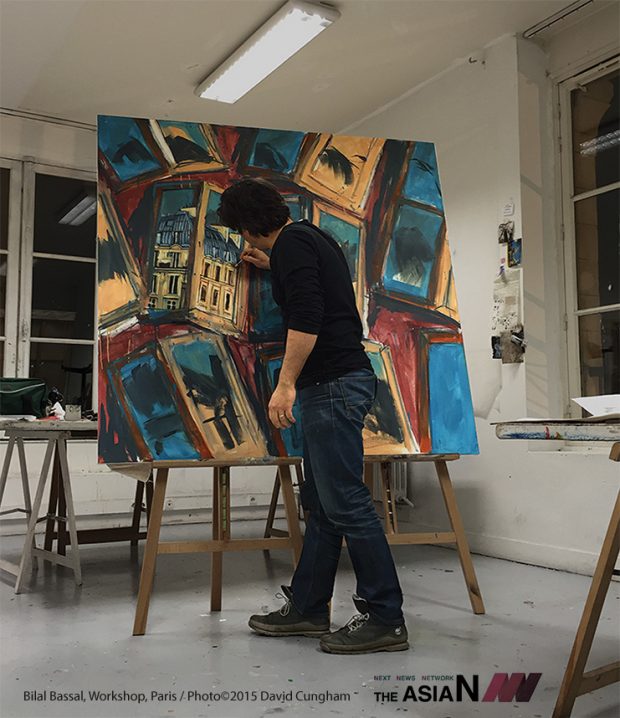
What scares you most about the future?
World War III. Well, I’m sure this subject scares everyone. By default, I’m an optimist, but when I follow current media and the development of modern-day technology like artificial intelligence, and the fact that with that thousands of jobs are disappearing, I ask myself the following question: is everything really going in the right direction?
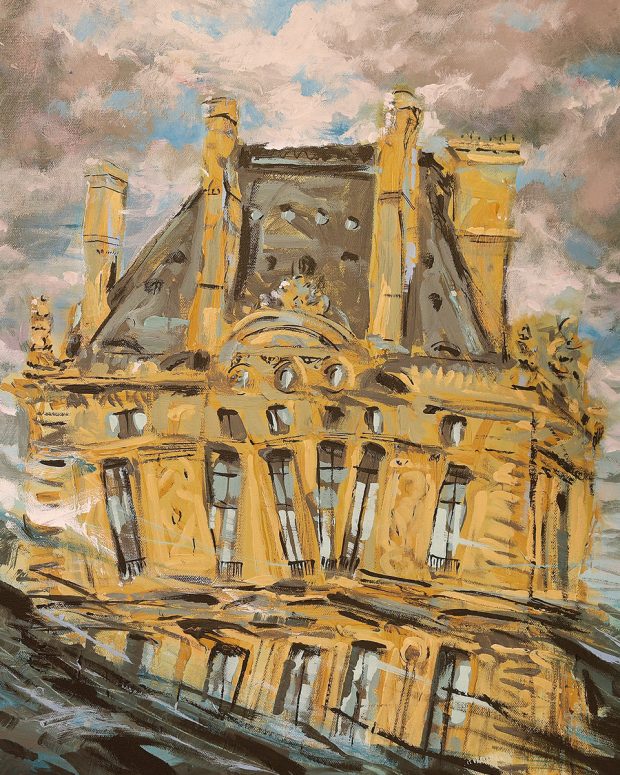
Acrylic on Canvas / 55 x 46 cm / Paris 2016 / Photographing artwork ©2016 Rami Chams
Pablo Picasso once said, “When I was a child, my mother said to me, ‘If you become a soldier, you’ll be a general. If you become a monk, you’ll end up as the Pope. Instead, I became a painter and wound up as Picasso”. When you were a child, what did you dream of becoming?
As a child, I drew all the time; without thinking I would become an artist one day. In fact, the image of an artist as a profession back in those days wasn’t very positive. Maybe some people still think that today, but art was considered an unstable career. I still loved to draw and paint. I thought of it more as a hobby, that was, until 15 years old, when I stumbled upon a picture of an old artist who was painting despite his age. I was fascinated, and from then on, I started to truly dream of becoming like that man. I want to be able to draw and paint until the last day of my life.




